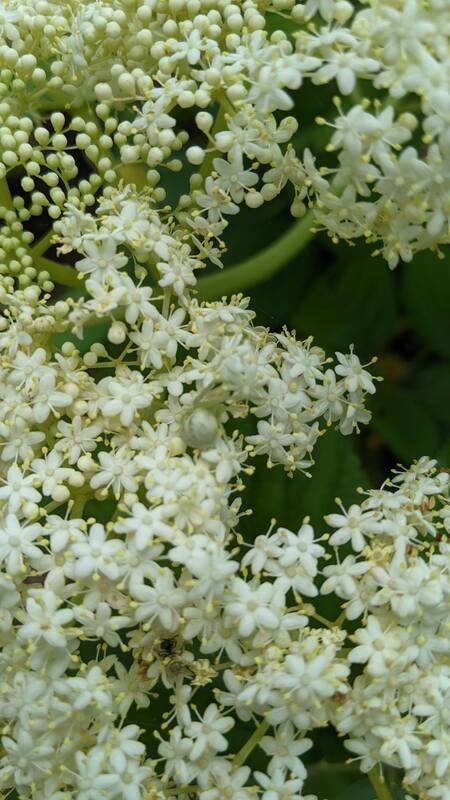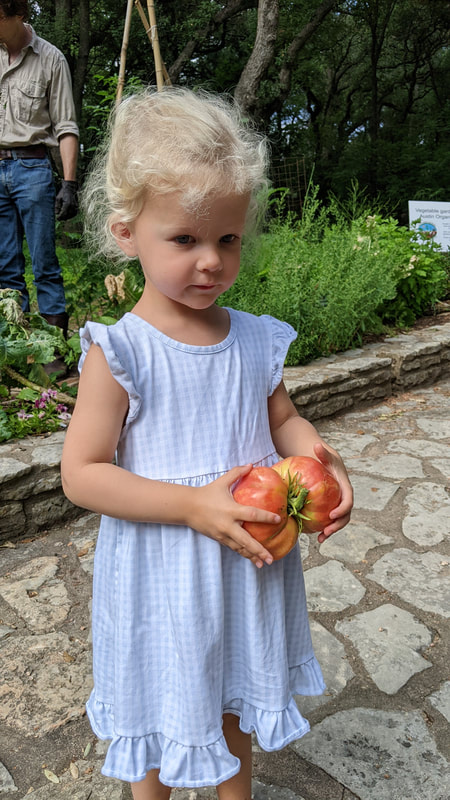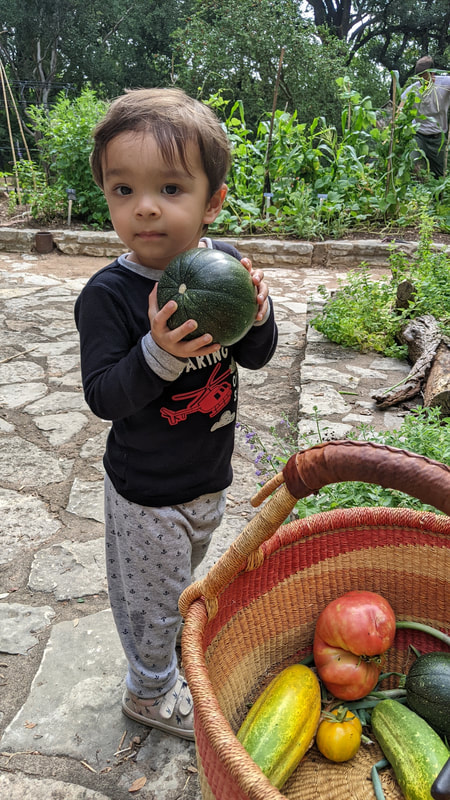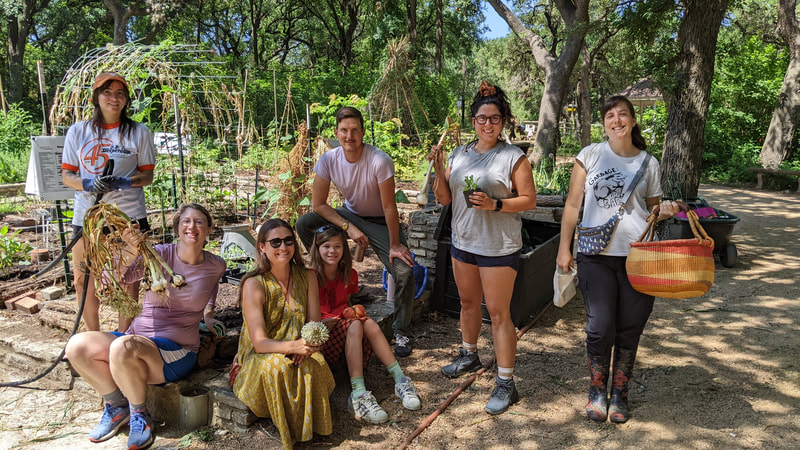We were dancing like fairies at the gardens this week after seeing all that was ready to harvest. We enjoyed elderflower cordials and harp and plant music by Andrea Cortez of Mind Body Music Center at the Woodland Faerie Trail kick-off! We had lots of guest helpers stopping by to help harvest our spring crops.
Here is what we were seeing this week in the teaching gardens Zilker Botanical Garden: 🌽 Milpa/Three Sisters update: We did some hand pollination to make sure we get good ears of corn. Several tatume squashes are almost ready to harvest some signs of SVB but tatume is outpacing those buggers. The pole beans are climbing high, providing support for the corn structurally and nutritionally by fixing nitrogen in the soil. Visit our website for the Squash Vine Borer Organic Guide. 🦗 With the heat the plants are sending off stress hormones and we are seeing a lot of stink bugs and beetles. We did a foliar spray of seaweed as a preventative measure. The seaweed is like a stress wrap and gives the plant nutrients it needs for growth. 🦎Seeing some helpers including a anole lizard. Male anoles have a pink colored throat fan (called a dewlap), which is used in both territorial and courtship displays. They eat insects like grasshoppers, moths, grubs, and beetles. 🧄 We have started to harvest and braid our multiplying Dr. Pound garlic that we grow on the perimeters of our beds. 🖤 Lots to harvest: Asparagus, blackberries, cucumbers, onions, and garlic, tomatoes, sweet peppers, elderflowers, and milky oats. Amaranth, Cosmos and Zinnias are starting to bloom. 🥜 The squash, malabar spinach and red noodle beans and southern peas are starting to come up on our new archway trellis. Okra and sunchokes are also coming up quick. Deep soaks at the teaching beds Zilker Botanical Garden.
Here is what we were seeing this week: With the heat the plants are sending off stress hormones and we are seeing a lot of leafhoppers, stinkbugs, and beetles. We did a foliar spray spray of seaweed as a preventative measure. The seaweed is like a stress wrap and gives the plant nutrients it needs for growth. We have started to harvest and braid our multiplying Dr. Pound garlic that we grow on the perimeters of our beds. 🖤 Lots of blackberries to harvest. This is our first year of getting a harvest as it takes a few years for the roots to get established. Wait until they are full black because they are tart otherwise. The legumes and southern peas are coming up quickly on our new archway trellis. We planted heat loving crops: red noodle beans, snake gourd, loofah squash, and Malabar spinach. Milpa/Three Sisters update: We are starting to see silks and tassels and next week we will do some hand pollination. The tatume squash is providing grown cover and protecting the soil and showing no signs of SVB. The pole beans are climbing high, providing support for the corn structurally and nutritionally by fixing nitrogen in the soil. Visit our website for the Squash Vine Borer Organic Guide. #milpa #southernpeas #luffa #garlicscapes #seaweedfoliarspray #seaweedinthegarden #epozote #threesisters
 We just passed the first quarter and the moon is now in waxing gibbous going into a full moon. Now is also a time to seed-in plants that fruit and seed like beans, cucumbers, watermelon, cantaloupe, pumpkins, squash, okra, and southern peas. If you already planted these things, remember that it’s a good idea to succession plant and grow twice as much as you will need in case of disease and pest. If you haven’t planted your nightshades, try to get established transplants of your tomatoes because July is usually when temperatures are too hot for them and they need 50 to 60 days to reach harvest. Although, this year as temperatures are a bit cooler, you may still be able to get a good harvest from larger established 1 gallon transplants. As always, it’s best to transplant and seed-in with the coming rains. DIRECT SEED
 Things are heating up at the teaching beds @zilkerbotanicalgarden and we all needed a deep soak! Here is what we were seeing this week: 🦗 With the heat the plants are sending off stress hormones and we are seeing a lot of beetles and grasshoppers. We did a foliar spray spray of seaweed as a preventative measure. The seaweed is like a stress wrap and gives the plant nutrients it needs for growth. 🥜 We planted, peanuts, red noodle beans, southern peas, black soybeans and a bunch of varieties of bush beans in the Legumes square of the four square garden. 🌱 We finished our archway trellis and planted heat loving crops: red noodle beans, snake gourd, loofah squash, and Malabar spinach. 🧄 The garlic continues to send out scapes so we harvest them so the plant puts its energy into the bulb growth. Scapes can be used in lots of recipes including making a pesto. 🌽 Milpa/Three Sisters update: We are starting to see silks and tassels. The epazote volunteered from last year. The tatume squash is really starting to take off and showing no signs of SVB. The pole beans are coming up quick, providing support for the corn structurally and nutritionally by fixing nitrogen in the soil. Visit our website for the Squash Vine Borer Organic Guide.
|
AuthorWrite something about yourself. No need to be fancy, just an overview. Archives
May 2024
Categories |







 RSS Feed
RSS Feed